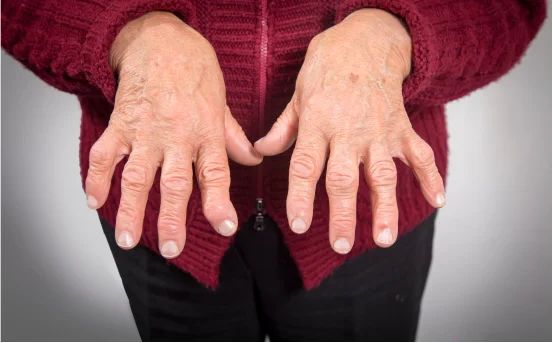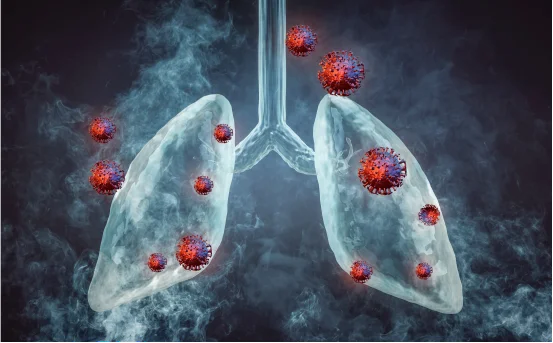Rheumatoid Arthritis disease (RA) is a chronic autoimmune disease that primarily affects the joints. Unlike osteoarthritis, which results from wear and tear, rheumatoid arthritis occurs when the immune system mistakenly attacks the body’s own tissues, particularly the synovium the lining of the membranes that surround the joints. Over time, this condition can lead to joint damage, chronic pain, and loss of function. Understanding what is rheumatoid arthritis disease is essential for early diagnosis and treatment.
Rheumatoid Arthritis (RA) is more than just joint pain it’s a complex, long-term autoimmune disease that can affect not only the joints but also various organs and systems in the body. Affecting millions of people worldwide, RA is a progressive condition that causes the immune system to mistakenly attack healthy tissues, particularly the lining of the joints. This leads to chronic inflammation, pain, stiffness, and eventual joint damage if not diagnosed and treated early. Knowing what is rheumatoid arthritis disease can empower individuals to seek timely care.
What is Rheumatoid Arthritis disease?
To comprehend what is rheumatoid arthritis disease, it’s important to note that it is classified as an autoimmune disorder. In people with RA, the immune system normally responsible for defending against infections turns against the body’s healthy tissues.
Rheumatoid arthritis is classified as an autoimmune disorder. In people with RA, the immune system normally responsible for defending against infections turns against the body’s healthy tissues. The result is inflammation in the joints, which can cause swelling, stiffness, and pain. If left untreated, the ongoing inflammation can erode the cartilage and bone, leading to joint deformity.
The disease typically affects smaller joints first, such as those in the fingers and toes. As it progresses, larger joints like the knees, hips, shoulders, and elbows can become involved. One of the defining features of RA is that it tends to affect joints symmetrically. For example, if one wrist is affected, the other wrist usually is too.
Causes and Risk Factors
The exact cause of rheumatoid arthritis remains unknown. However, several factors are believed to contribute to the development of this condition. These include a combination of genetic, environmental, and hormonal influences.
People with a family history of RA may be more prone to developing the disease, especially if certain genes such as the HLA-DR4 allele are present. Environmental triggers like viral or bacterial infections could potentially initiate the immune response that leads to RA. Smoking is another well-established risk factor that increases both the likelihood of developing RA and the severity of symptoms.
Hormonal factors also play a role, as women are two to three times more likely to develop RA than men. The disease often begins between the ages of 30 and 60 in women and somewhat later in men.
Common Symptoms of Rheumatoid Arthritis
The symptoms of rheumatoid arthritis can vary in severity and may come and go. Periods of increased disease activity, called flares, alternate with periods of relative remission. Early symptoms are often subtle but become more pronounced as the disease progresses.
Recognizing what is rheumatoid arthritis disease early can lead to better management of symptoms and improved quality of life.
Some of the hallmark signs of RA include joint pain, swelling, and stiffness particularly in the morning or after periods of inactivity. The stiffness may last for more than 30 minutes and can severely impact daily activities.
Understanding what is rheumatoid arthritis disease and its symptoms can aid in timely diagnosis and intervention.
As the disease advances, patients may notice fatigue, low-grade fever, weight loss, and a general feeling of being unwell. Over time, rheumatoid nodules firm lumps under the skin can appear, particularly around pressure points such as the elbows.
In severe cases, RA can also affect other parts of the body including the eyes, lungs, heart, kidneys, and skin. This systemic involvement makes RA more than just a joint disease it is a condition that can impact the entire body.
How Rheumatoid Arthritis is Diagnosed?
Diagnosing rheumatoid arthritis involves a comprehensive evaluation that includes a detailed medical history, physical examination, laboratory tests, and imaging studies. Early diagnosis is crucial to prevent long-term joint damage and disability.
During the physical exam, the doctor checks for joint swelling, warmth, tenderness, and limited range of motion. Blood tests such as Rheumatoid Factor (RF), anti-CCP (cyclic citrullinated peptide) antibodies, and ESR (erythrocyte sedimentation rate) or CRP (C-reactive protein) help detect inflammation and specific immune responses associated with RA.
Imaging studies like X-rays, ultrasounds, or MRI scans may be used to assess the extent of joint damage and monitor disease progression. These tools are valuable in ruling out other conditions that mimic RA, such as lupus, gout, or osteoarthritis.
Treatment Options for Rheumatoid Arthritis
There is no permanent cure for rheumatoid arthritis, but effective treatments can help control symptoms, reduce inflammation, and prevent further joint damage. The treatment plan often includes a combination of medications, physical therapy, lifestyle changes, and sometimes surgery.
Patients should learn what is rheumatoid arthritis disease to actively participate in their treatment decisions.
Medications :- play a central role in RA management. Disease-modifying antirheumatic drugs (DMARDs), such as methotrexate, are commonly prescribed to slow the progression of the disease. Biologic agents, which target specific components of the immune system, are used in moderate to severe cases.
Nonsteroidal anti-inflammatory drugs (NSAIDs) and corticosteroids are used for symptom relief, although they do not halt disease progression. These are often prescribed during flare-ups to reduce pain and swelling.
Physical therapy and occupational therapy help maintain joint flexibility, strengthen muscles, and improve overall mobility. In advanced cases where joints are severely damaged, surgical interventions such as joint replacement may be necessary.
Lifestyle and Self-Care Strategies
Living with rheumatoid arthritis can be challenging, but adopting certain lifestyle changes can significantly improve the quality of life. A balanced diet rich in anti-inflammatory foods such as fruits, vegetables, whole grains, and omega-3 fatty acids—can help reduce joint inflammation.
Education about what is rheumatoid arthritis disease can help patients make informed choices about their health and lifestyle.
Regular, low-impact exercise, like swimming, walking, or yoga, helps maintain joint flexibility and supports cardiovascular health. It’s important to balance activity with rest, especially during flare-ups.
Maintaining a healthy weight reduces the load on weight-bearing joints, easing pain and improving mobility. Smoking cessation is crucial, as tobacco use not only increases the risk of developing RA but also interferes with treatment effectiveness.
Stress management techniques such as mindfulness, deep breathing, and counseling can also be beneficial. Chronic pain and fatigue often take a toll on mental health, so addressing emotional well-being is a key component of RA care.
Complications Associated with RA
If left untreated, rheumatoid arthritis can lead to serious complications. Joint deformities, disability, and loss of mobility are the most visible consequences. However, RA can also affect other organ systems.
Being aware of what is rheumatoid arthritis disease helps in understanding the serious complications that may arise if left untreated.
Patients with RA are at a higher risk of developing cardiovascular diseases, such as heart attack and stroke, due to the chronic inflammation that affects blood vessels. Lung conditions, including interstitial lung disease and pleuritis, may occur. Eye complications like dry eyes or inflammation (scleritis or uveitis) are also possible.
Anemia, osteoporosis, and infections sometimes due to immunosuppressive therapy can further impact health. Because of these risks, continuous monitoring and comprehensive care are necessary for managing RA effectively.
Awareness of what is rheumatoid arthritis disease is crucial for comprehensive care and monitoring of potential complications.
Living with Rheumatoid Arthritis: A Holistic Approach
Understanding what is rheumatoid arthritis disease can guide patients towards holistic treatment approaches.
Managing rheumatoid arthritis is not just about medications it’s about adopting a holistic approach that includes medical treatment, physical therapy, emotional support, and lifestyle modifications.
Joining support groups or patient communities can provide emotional relief and help people feel less isolated. Education about the disease empowers patients to take charge of their health. Partnering with a rheumatologist and following a personalized care plan ensures the best long-term outcomes.
Involvement in support groups can help reinforce knowledge about what is rheumatoid arthritis disease and its management.
Patients are encouraged to keep track of their symptoms, communicate openly with healthcare providers, and stay informed about the latest advancements in RA research and treatment.
Keeping abreast of what is rheumatoid arthritis disease will help patients stay proactive in their treatment journey.
Conclusion
Rheumatoid arthritis is a complex, lifelong disease that affects millions of people around the world. While it can significantly impact daily life, early diagnosis and a comprehensive treatment approach can help manage the symptoms and prevent joint damage. In conclusion, understanding what is rheumatoid arthritis disease is vital for improving patient outcomes.
In summary, what is rheumatoid arthritis disease is a fundamental question that every patient should explore to take charge of their health.























